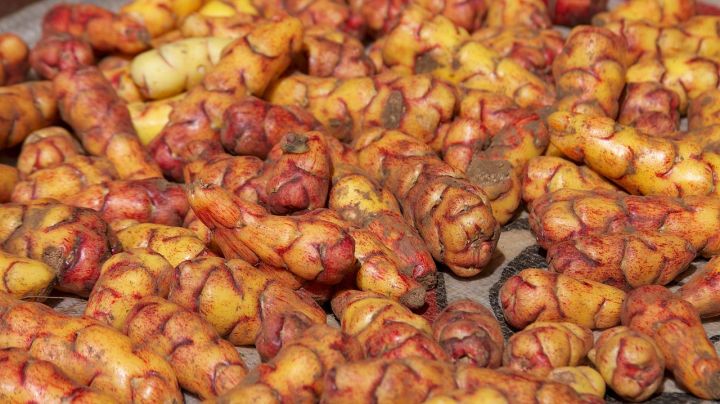How Peru’s Virgilio Martinez Went From Amateur Skateboarder to the World’s Best Chef

Creative Commons "Peru - Cusco 107 - Peruvian papas” by McKay Savage is licensed under CC BY 2.0
For years, foodies have touted Peruvian cuisine as the next big thing. The well-deserved acclaim is a result of the country’s rich biodiversity and bomb food. That’s why it’s not surprising that just last year, the World Travel Awards named the country South America’s Leading Culinary Destination. Or that once again Peru had a decent showing in this year’s World’s 50 Best Restaurants list. (Three Lima restaurants made the cut.) Plenty of Peruvian chefs have helped raise their country’s gastronomic profile, including Virgilio Martínez, the newly crowned best chef in the world.
On Wednesday, World’s 50 Best awarded Martínez the Chef’s Choice Award at an event taking place in Australia. “Virgilio Martínez has helped propel Peru’s status as a foodie destination to new heights with constant research and improvement at his flagship restaurant, Central,” according to the organization. “With a restless approach to development, Martínez is one of the most active chefs on the planet. Though he is based in Lima, he makes regular trips to the Andes and the Peruvian Amazon in search of new ingredients for his 17-course tasting menu, which presents the nation’s produce at every altitude from 20 meters below sea level to 4,100 meters above it.”
But had it not been for several skateboarding accidents, the world may never have learned of Martínez, the chef. He initially pursued a career in skateboarding and worked as semi-pro skater, but he fractured his clavicle and had to take a break. He eventually returned to skating and broke his other shoulder. “That’s when I stopped skating,” he told CNN. “I loved it but once I started cooking, I left all that behind and became totally involved in the kitchen. I’d toyed with being an architect too but I wanted to travel – cooking lets me do that.”
Martínez, 39, attended Le Cordon Bleu and cooked in prestigious restaurants in New York City, Italy, France, and South East Asia. And though he made waves in the culinary world, on a visit home to Peru, he realized he lacked knowledge of his own country’s cuisine.
“I realized that I spent six years a foreigner doing cuisines that did not belong to me, and I had no idea about Peruvian cuisine,” he said, according to Eater. “For me, it was a [wake up call.]”
He then began working for another Peruvian cooking icon, Gastón Acurio. He worked his way up, and eventually Acurio put Martínez in charge of a restaurant he planned to open in Madrid. And that’s where Virgilio began developing his signature style. Acurio began hearing that Martínez cooked in more creative ways, so he headed to the Madrid restaurant to see what they meant. He tried the arroz con pato, a traditional Peruvian dish, that Virgilio had completely transformed. Acurio asked him to put the dish back to the way he intended it to be served, and he knew then that it was time for Virgilio to strike out on his own. “I felt there’s a moment that you need to play the game, and there’s a moment that you need to play your game,” Acurio said. “Clearly, it was time for him to play his game.”
In 2008, he opened Central in Lima. And though he received positive reviews, critics also compared his food to what they found in New York or London. This bothered him, but he realized that his decade of cooking all over Europe had shaped him. “I was doing European cuisine with this Peruvian touch,” he said. It didn’t feel authentic. That’s when he began exploring the Andes, which dramatically changed his views on food.
“After seeing these terraces, I was obsessed,” he said of visiting the Incan terraces at Moray. “And then I started to talk to people, and I learned some Andean philosophy of life. They actually see the world in different levels and altitudes.”
Now at Central, which he runs with wife Pia León, they use 180 different ingredients. He estimates that 50 percent of them people do not know. In 2012, he introduced his altitude menu – inspired by the pre-Columbian cooking style of the Incas. His menu highlights everything from 65 feet below sea level to 13,000 feet above.
“Since I came up with the idea of the altitude menu, we’ve been discovering these new things. And after four years, I realize that we know nothing — we know a little, that’s it. I’m still learning a lot. This is a work in progress. This is just the beginning.”